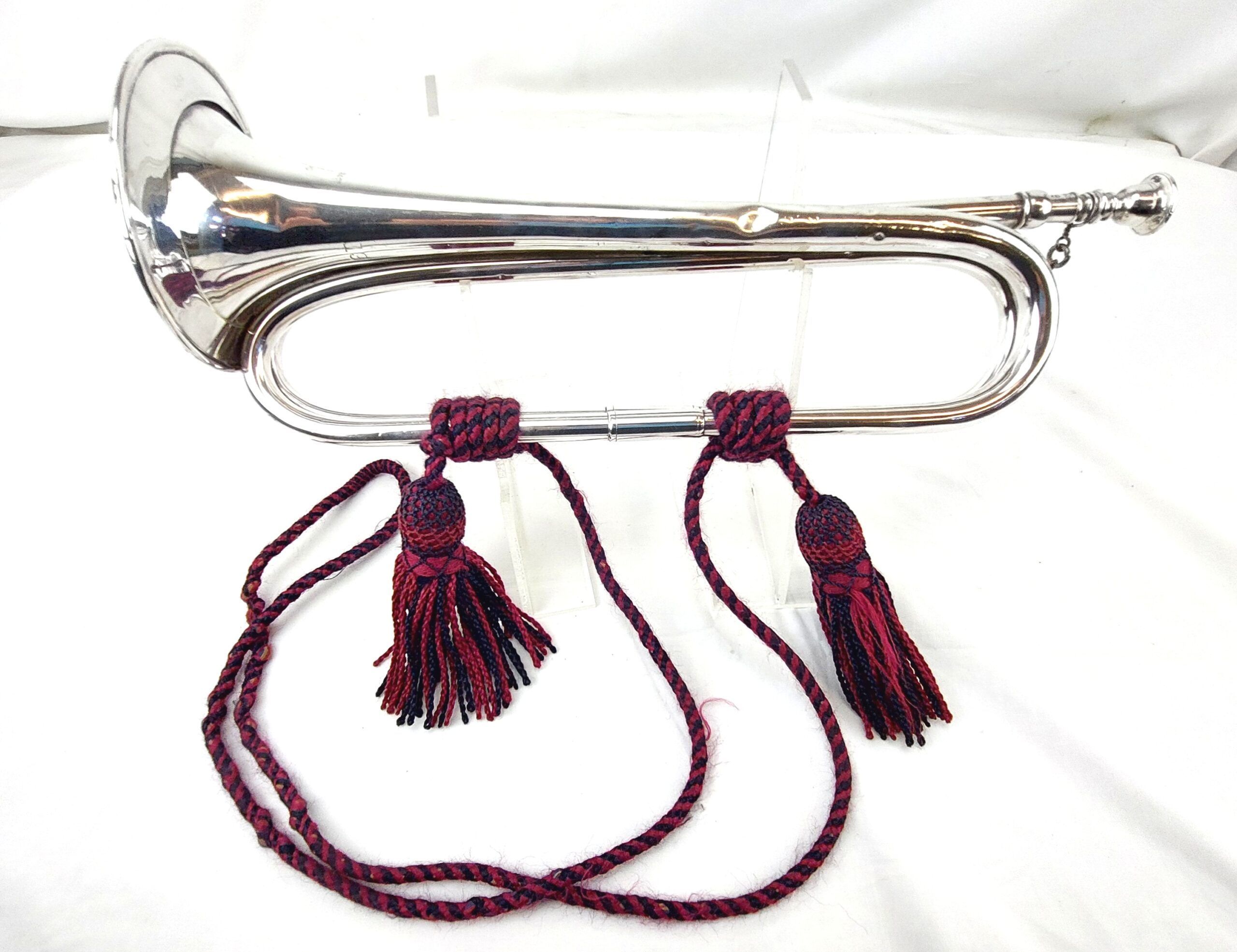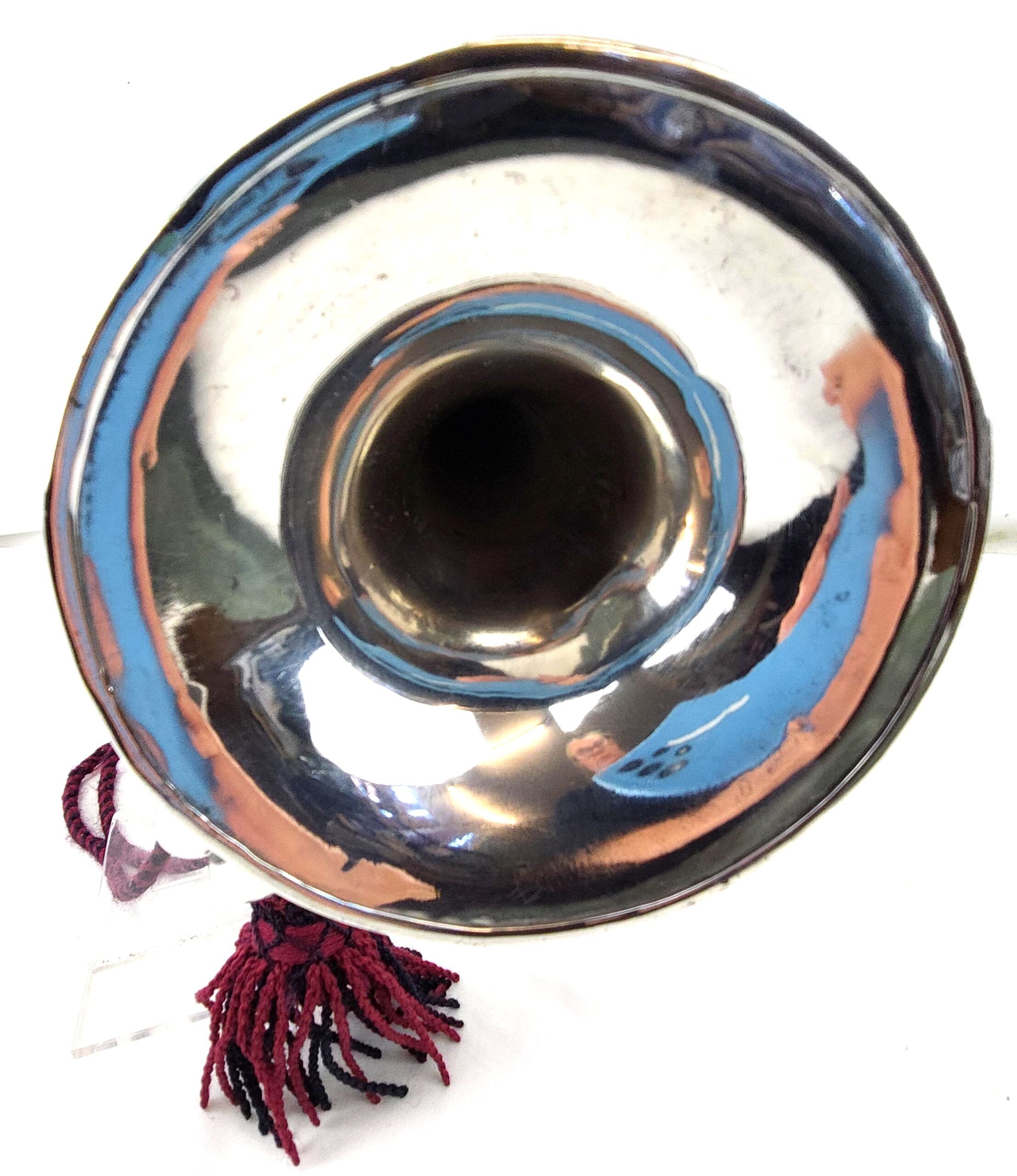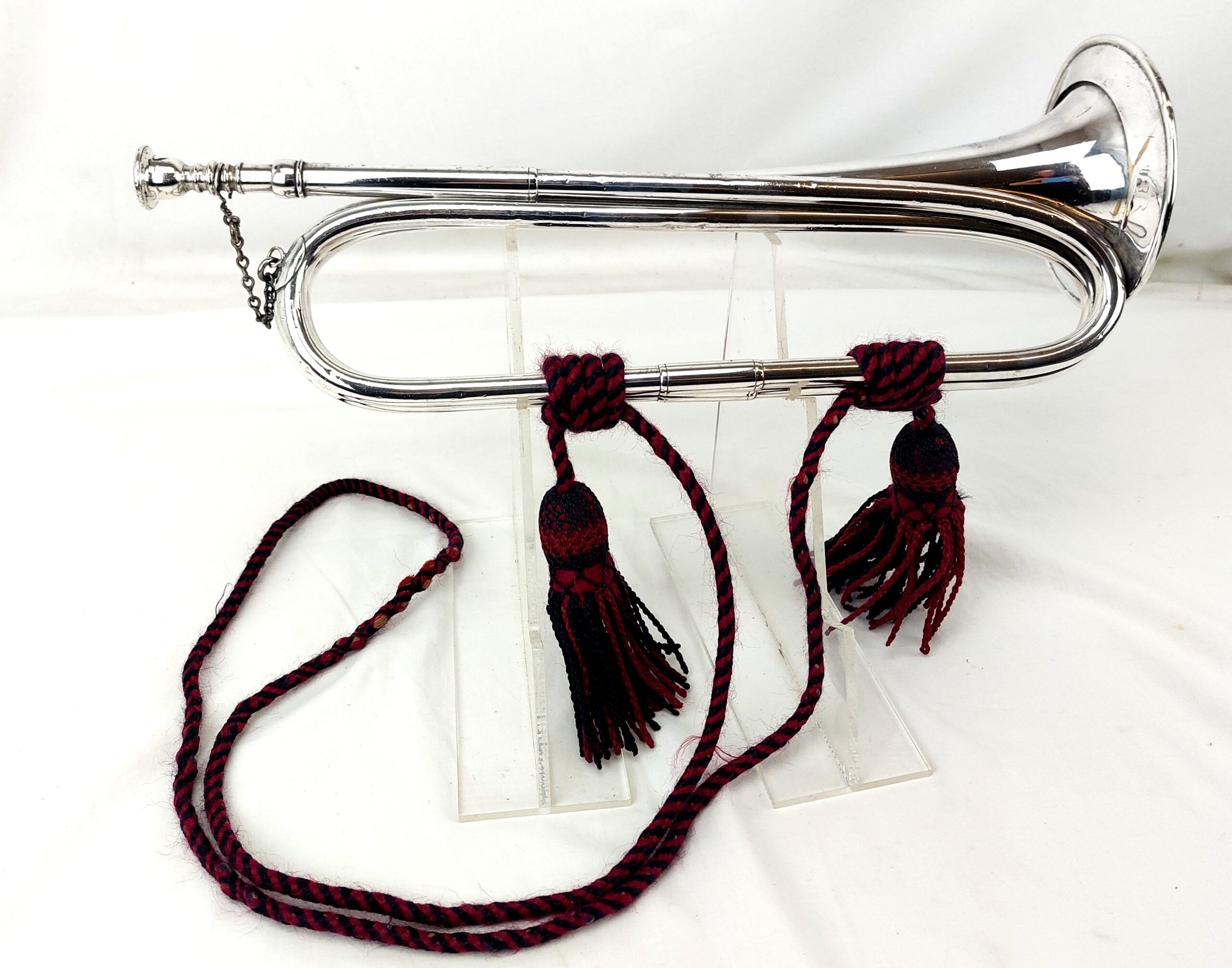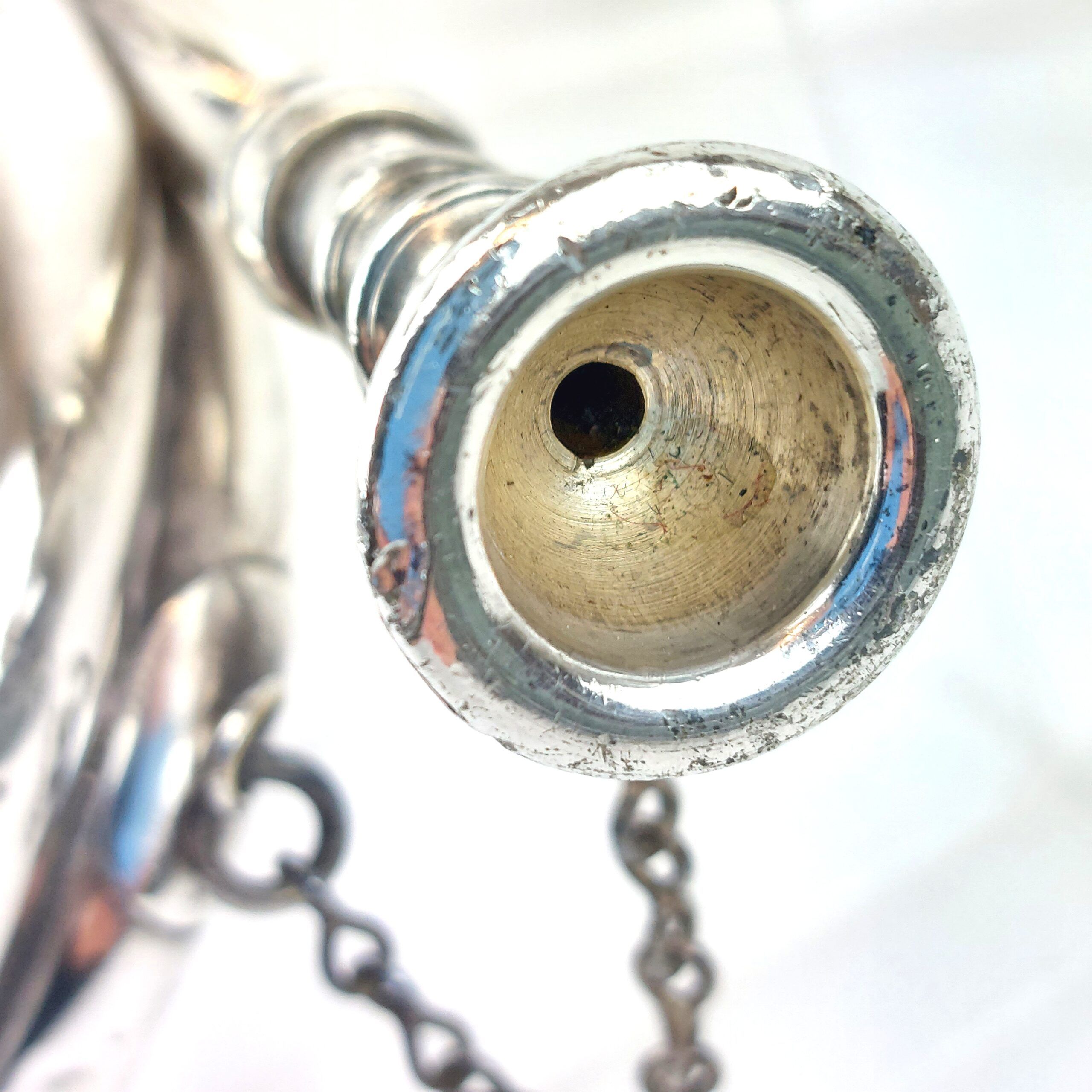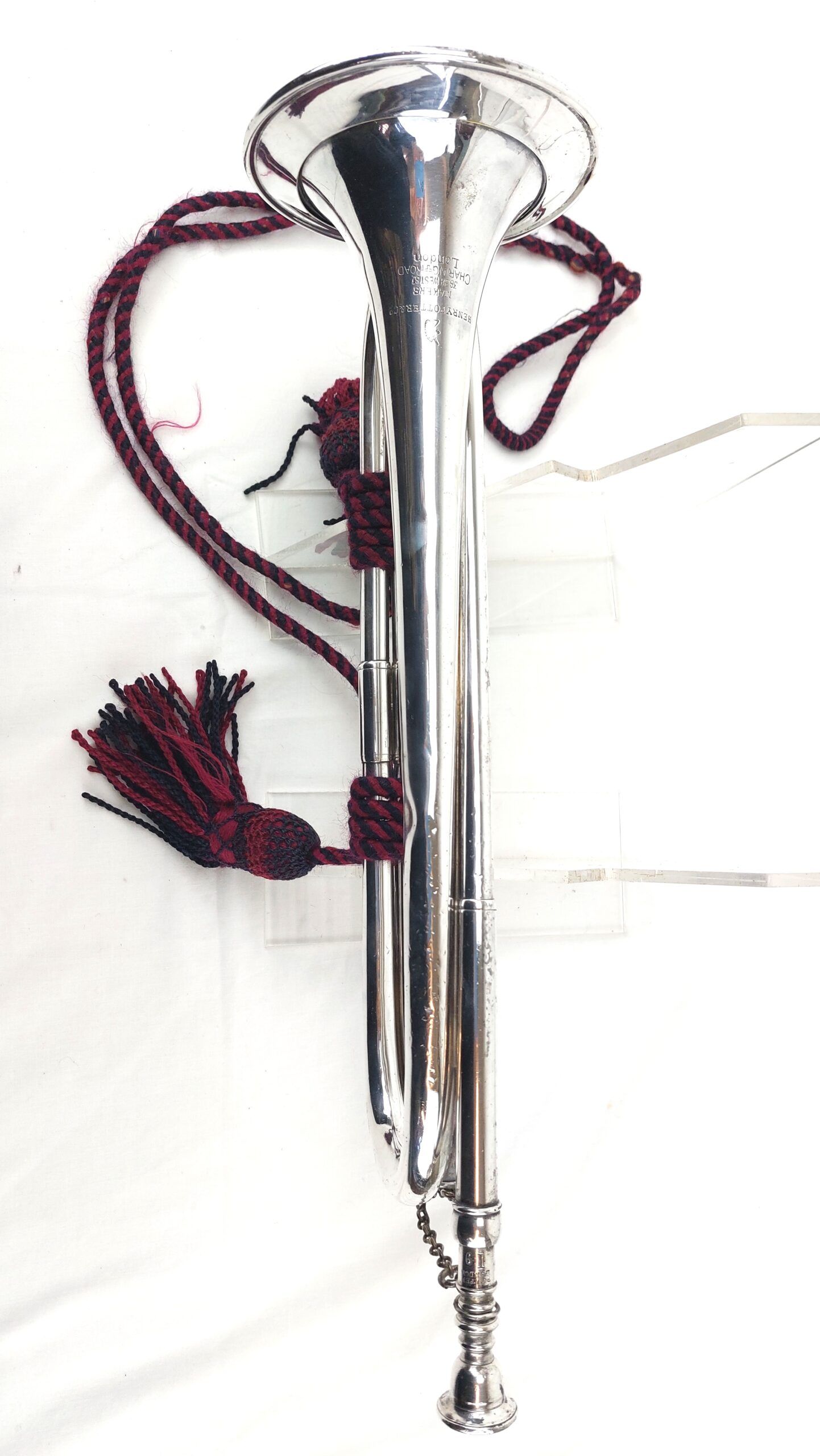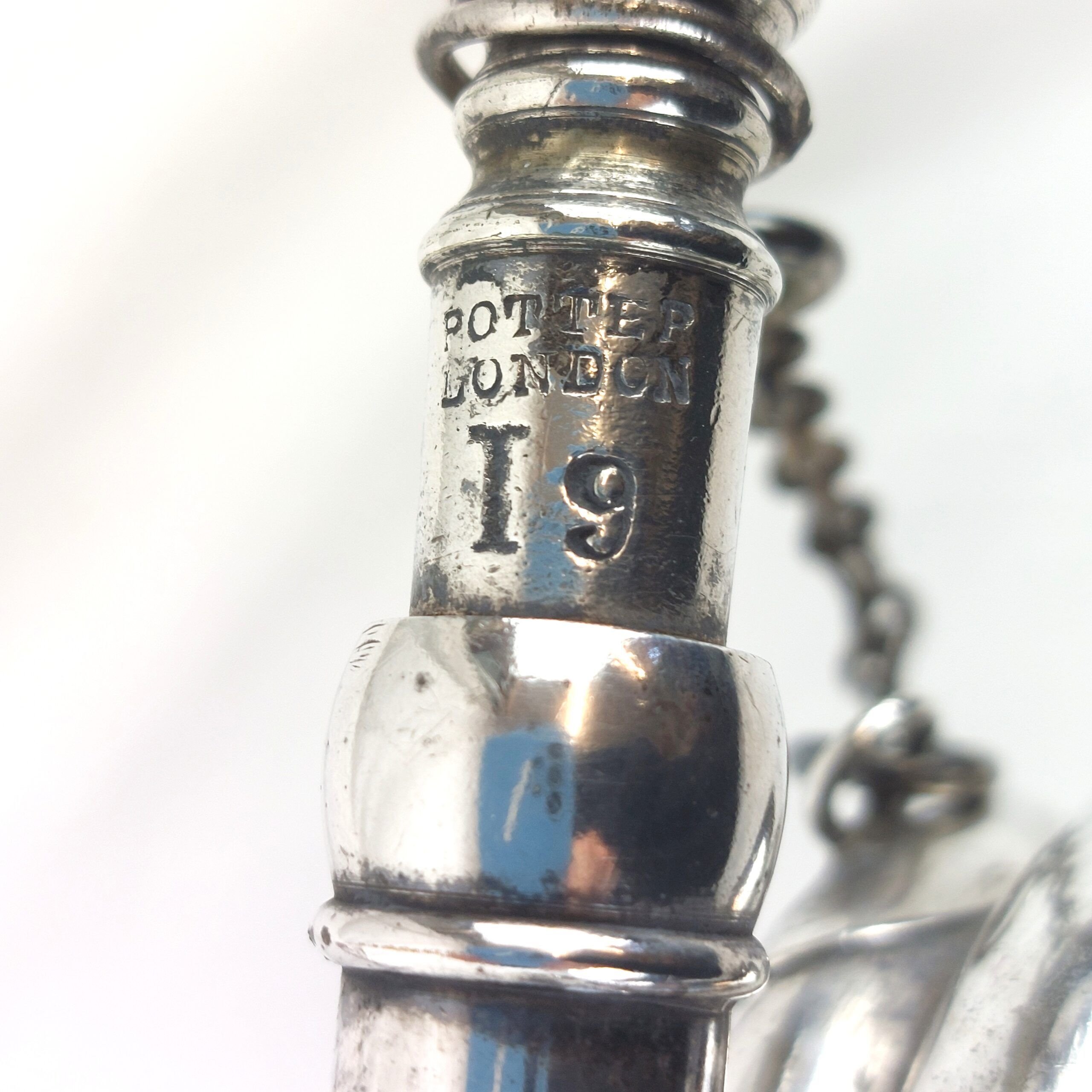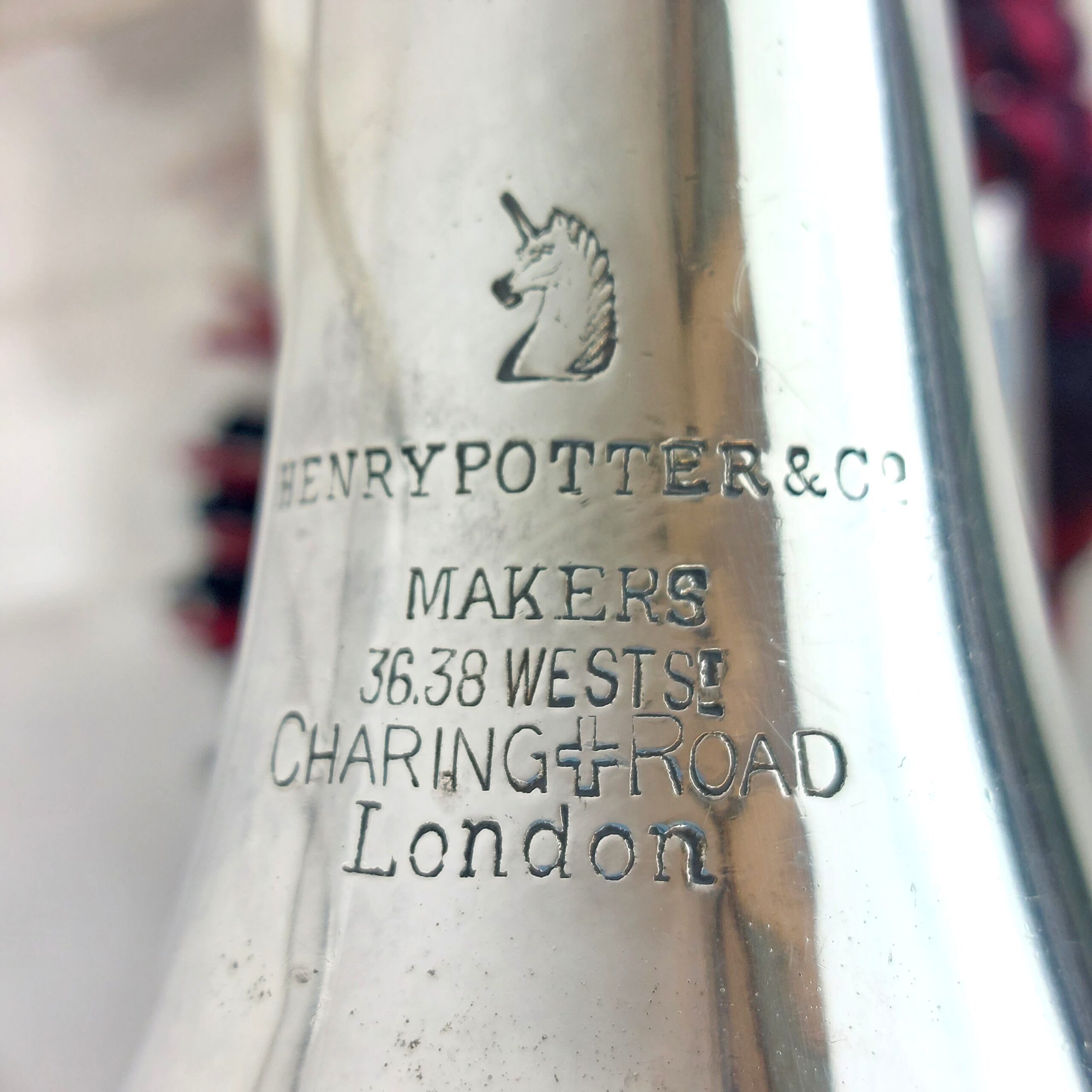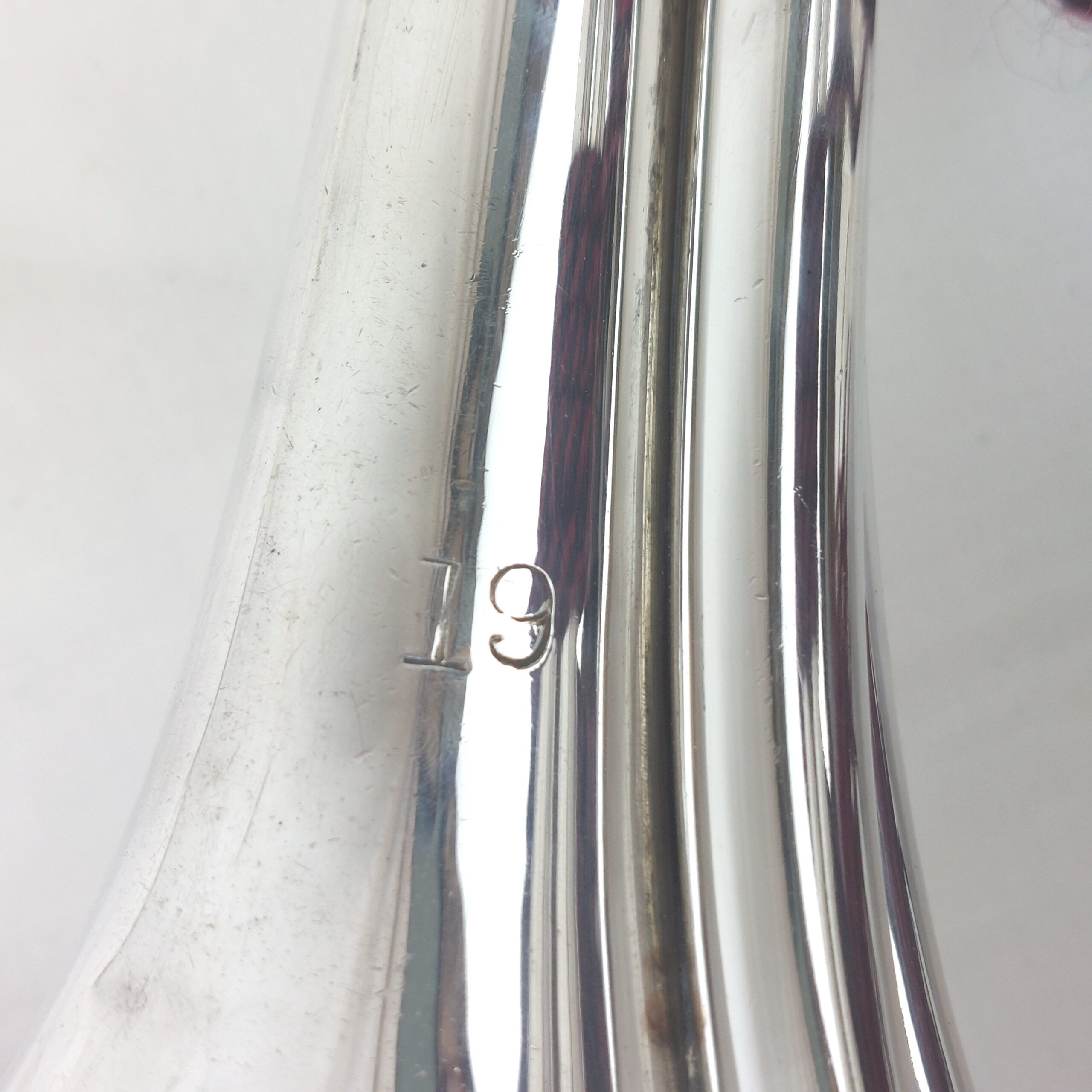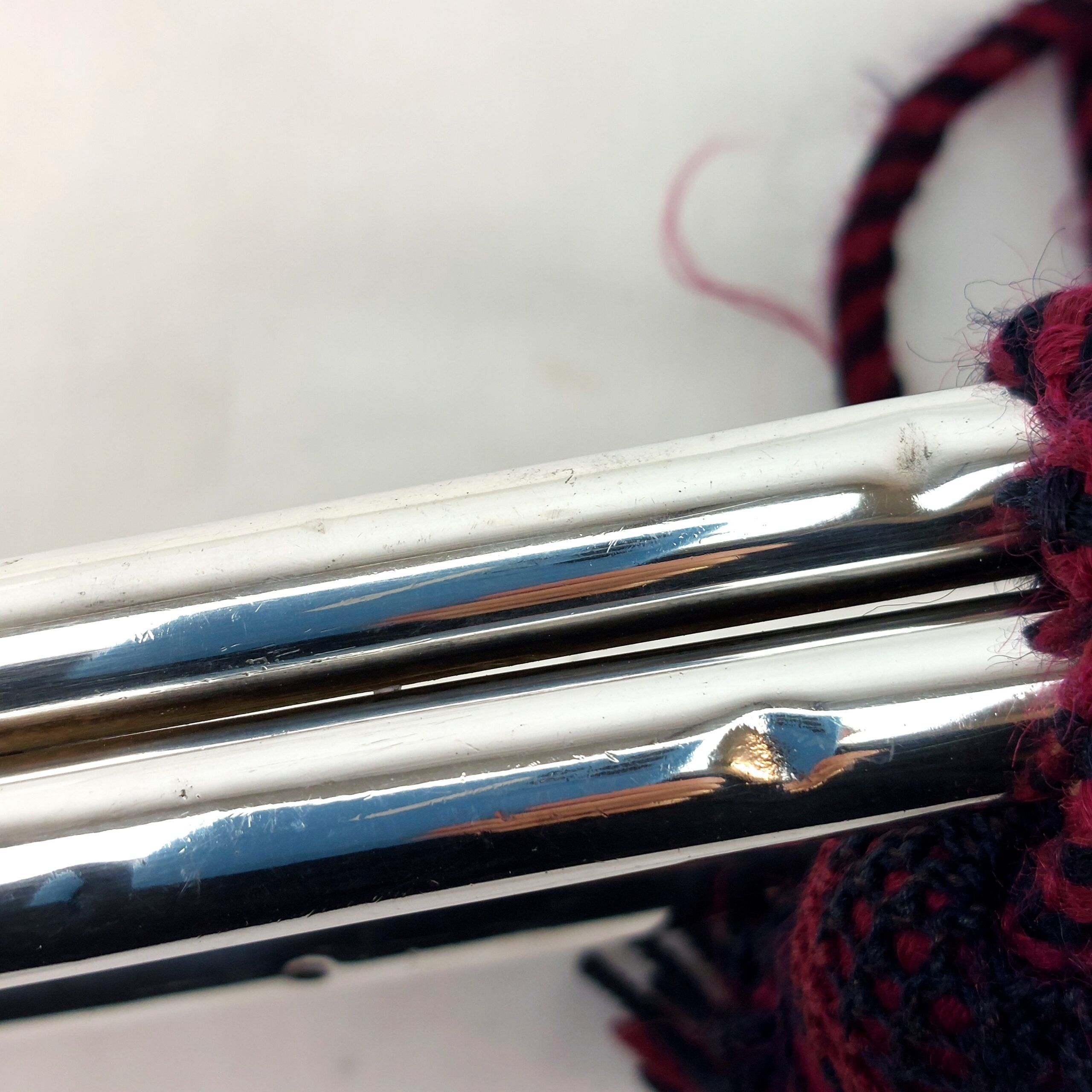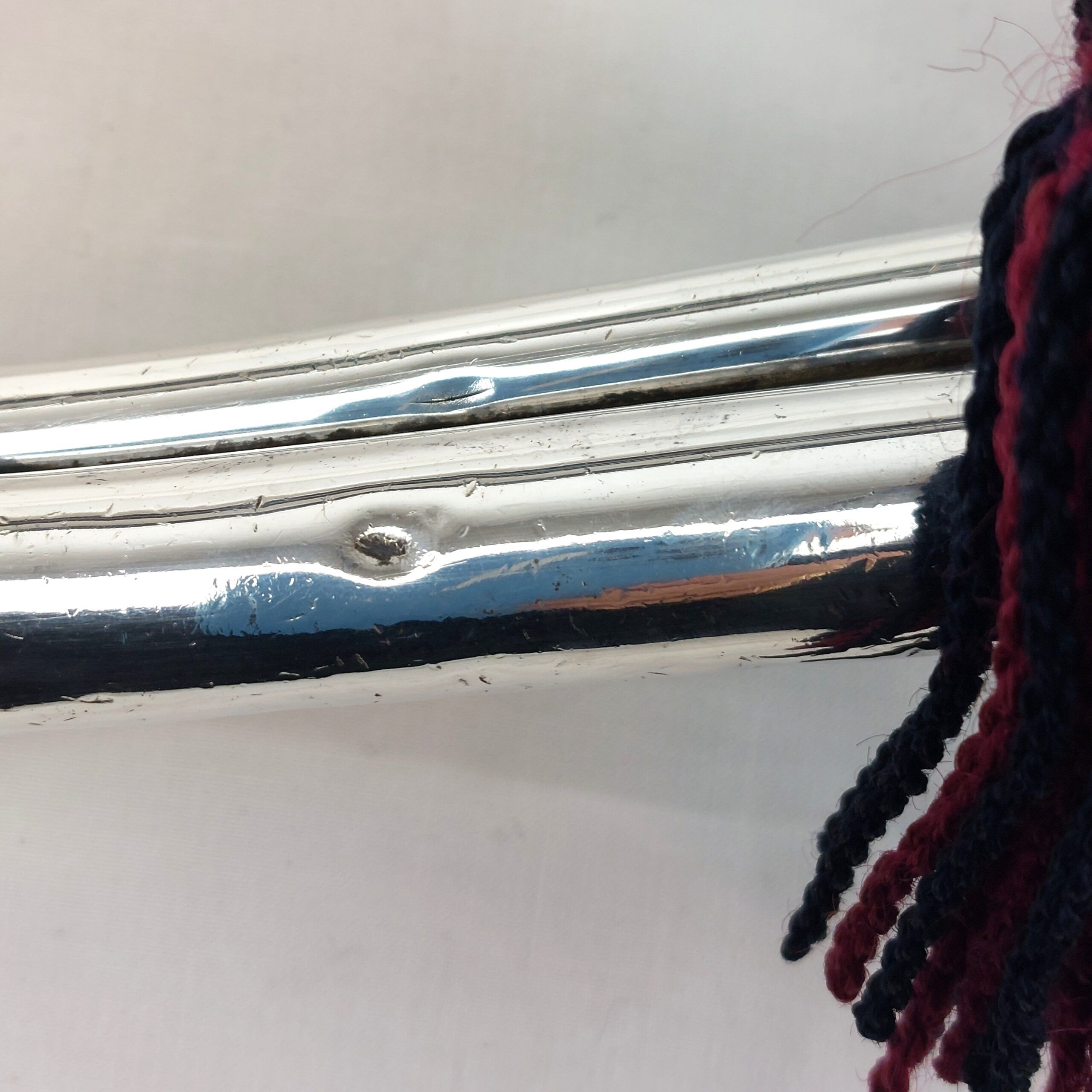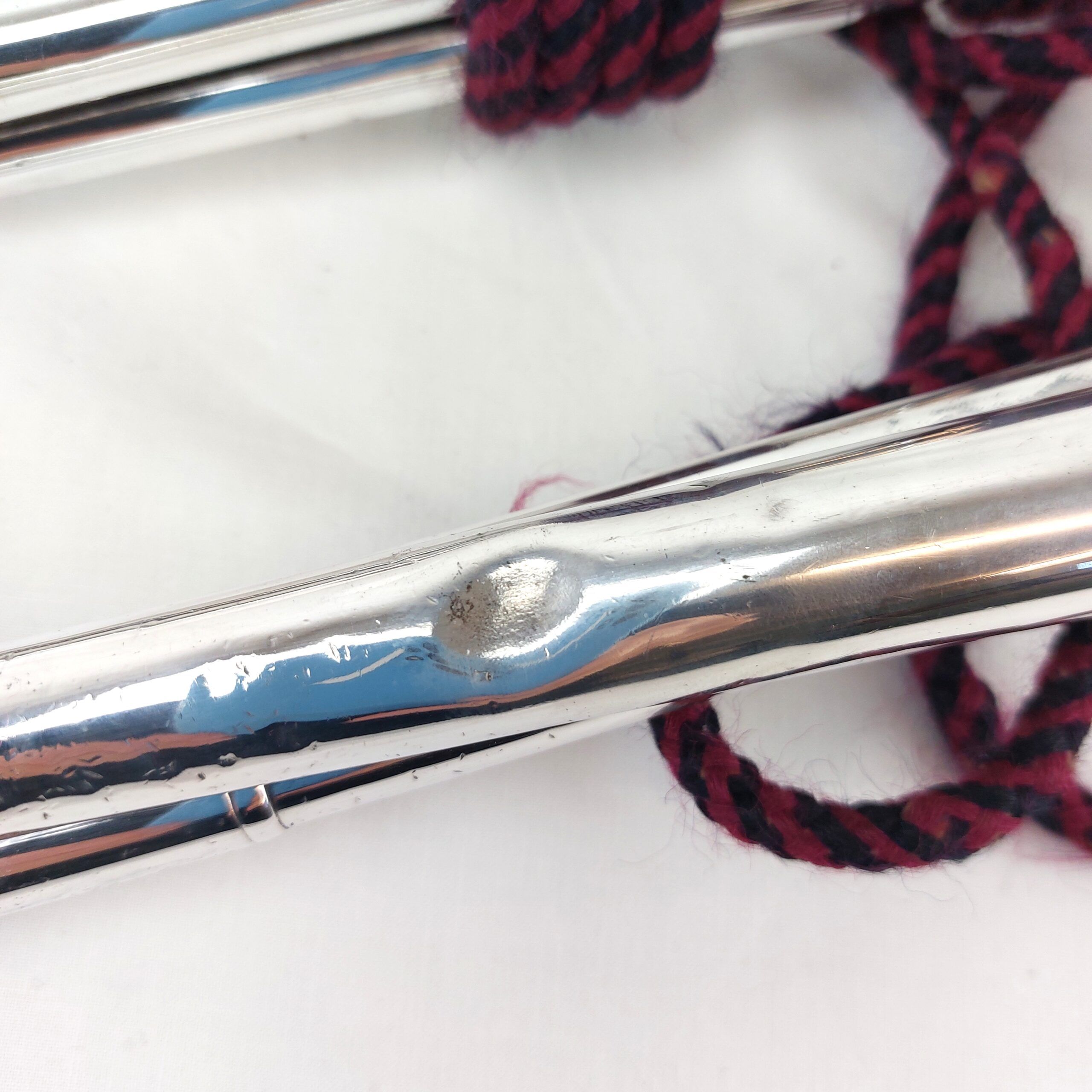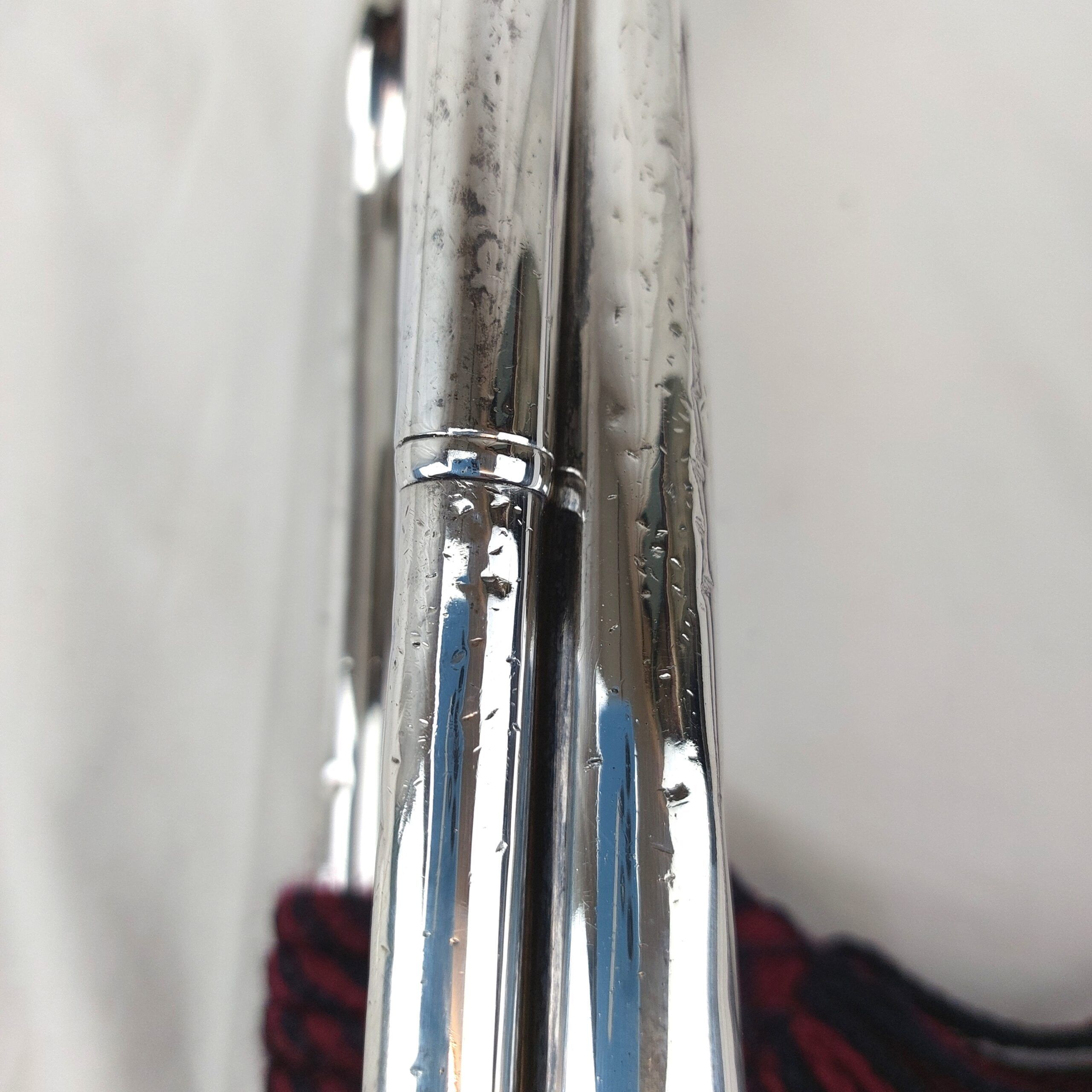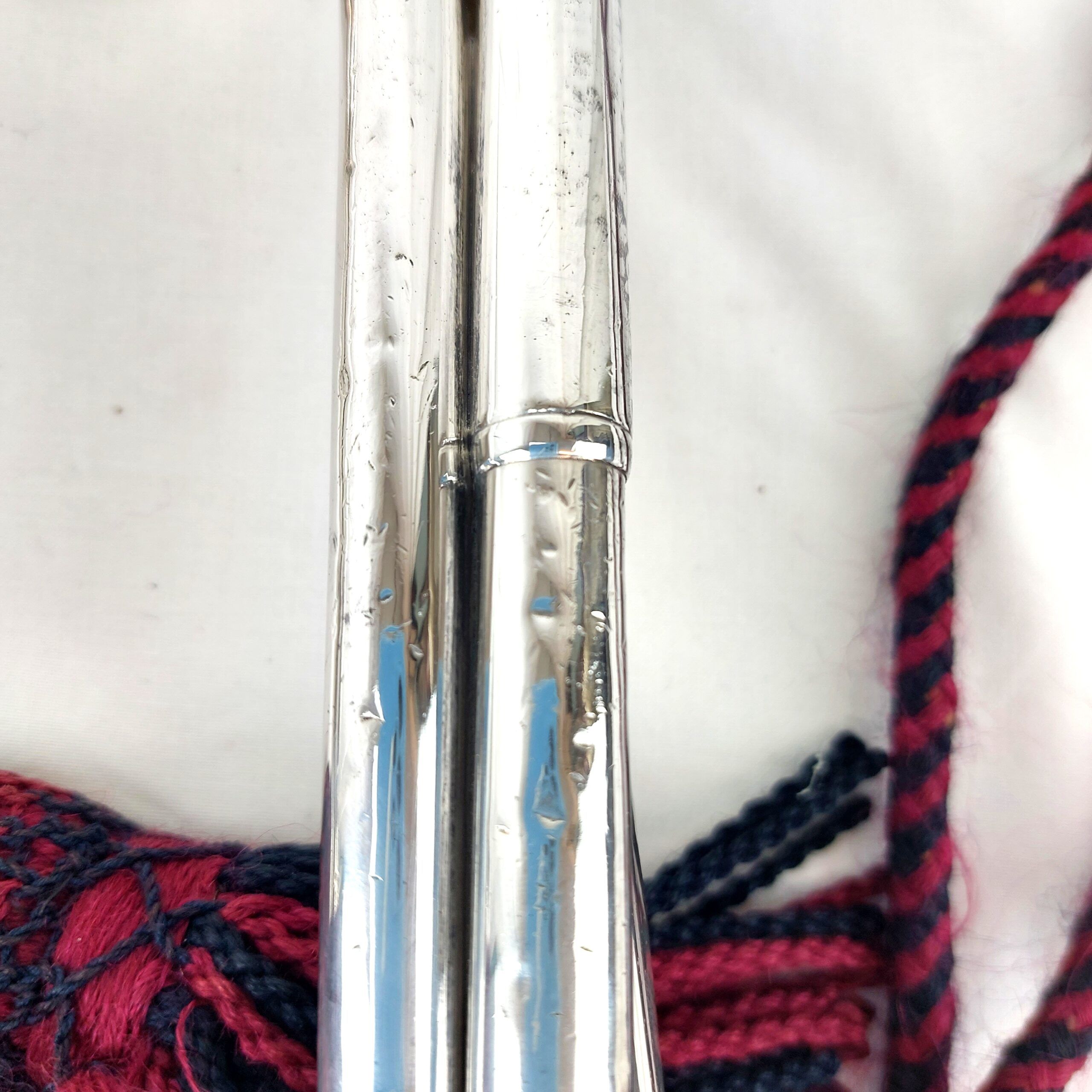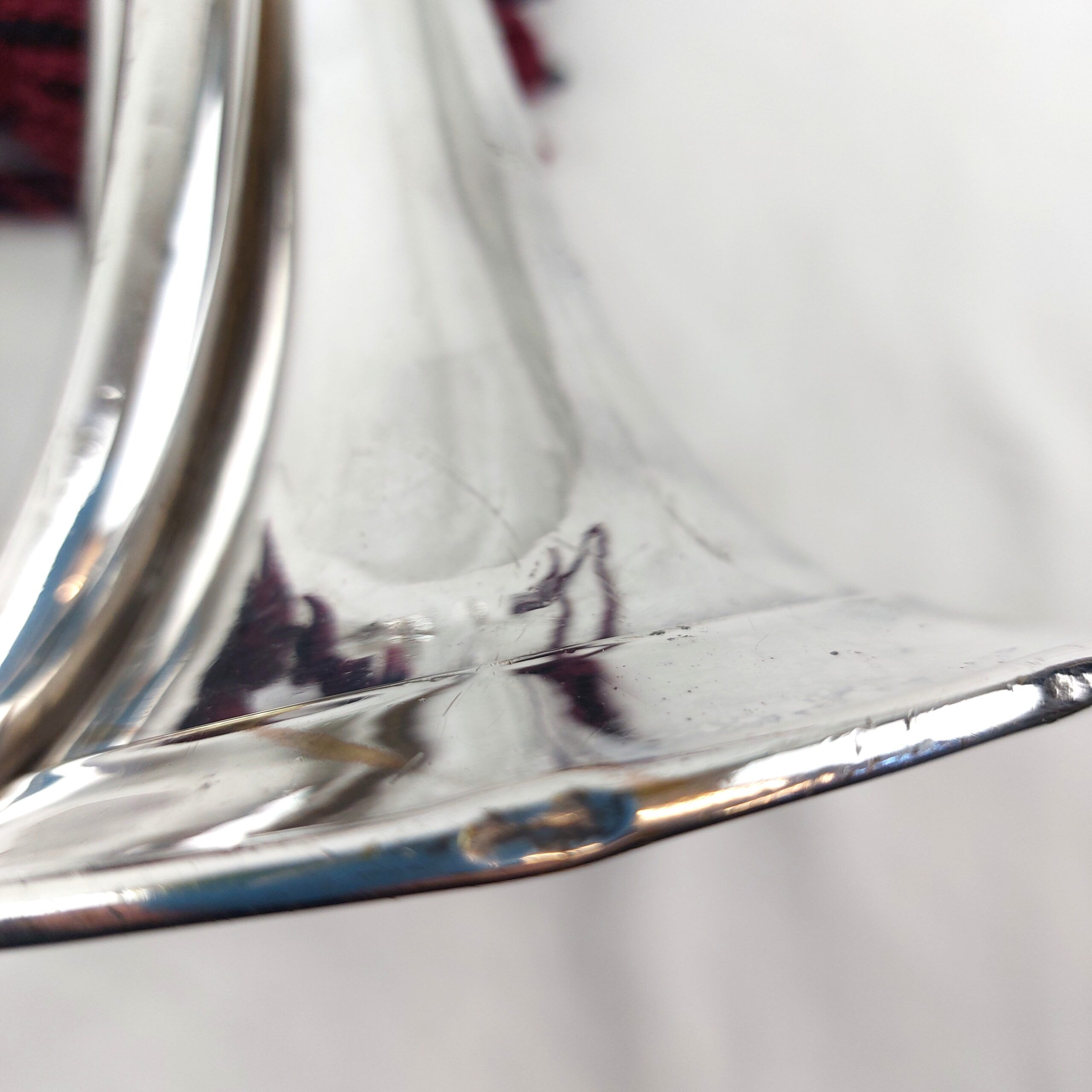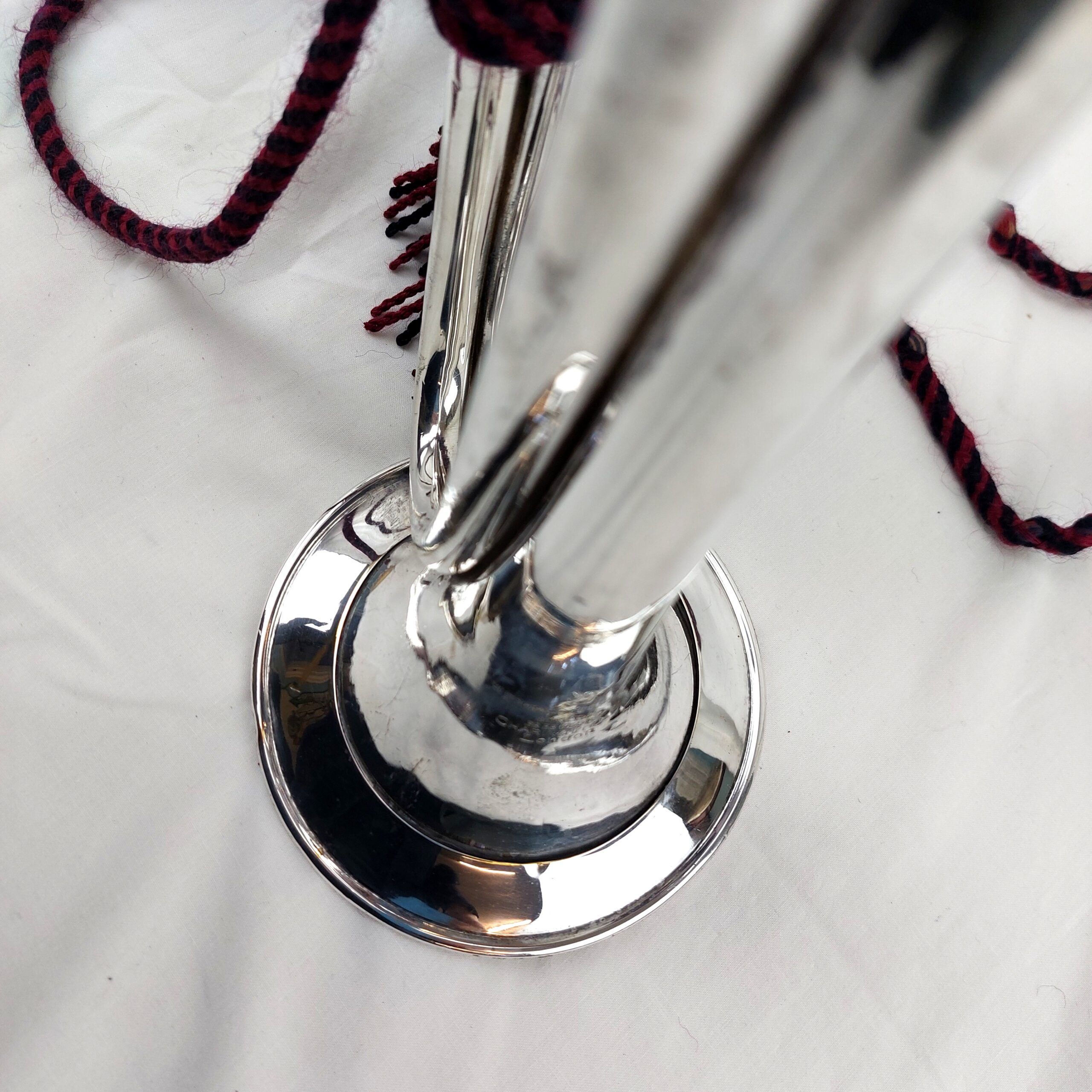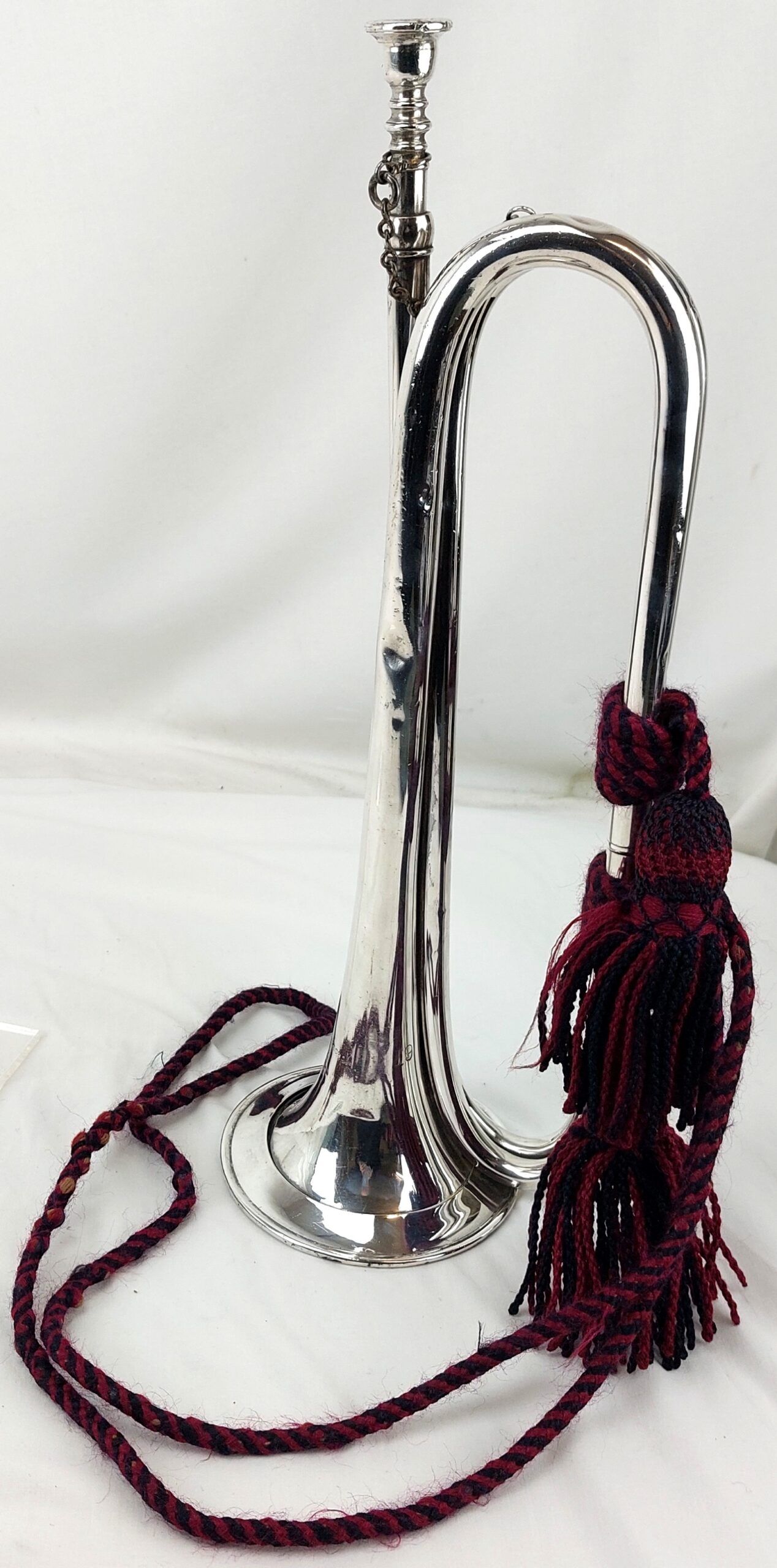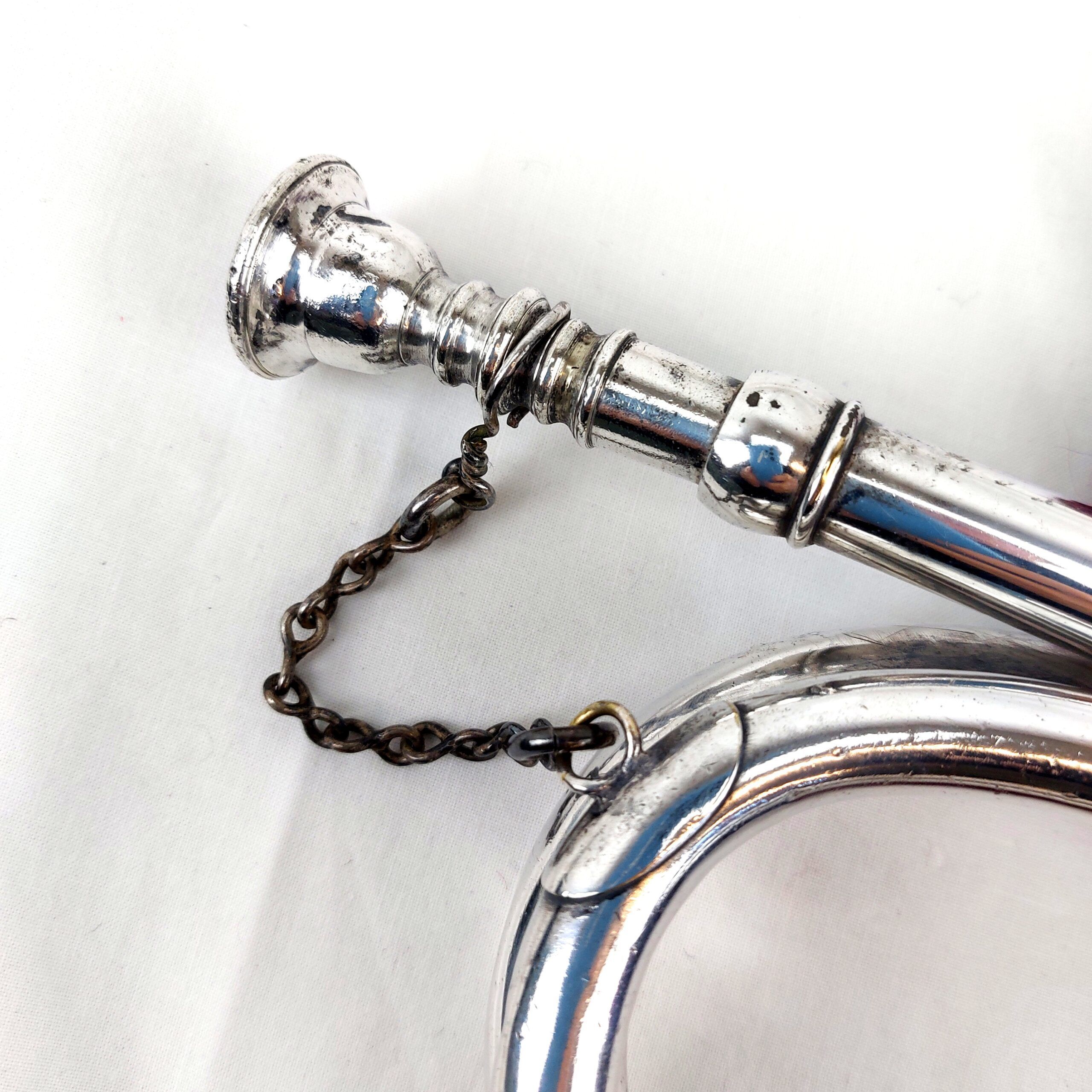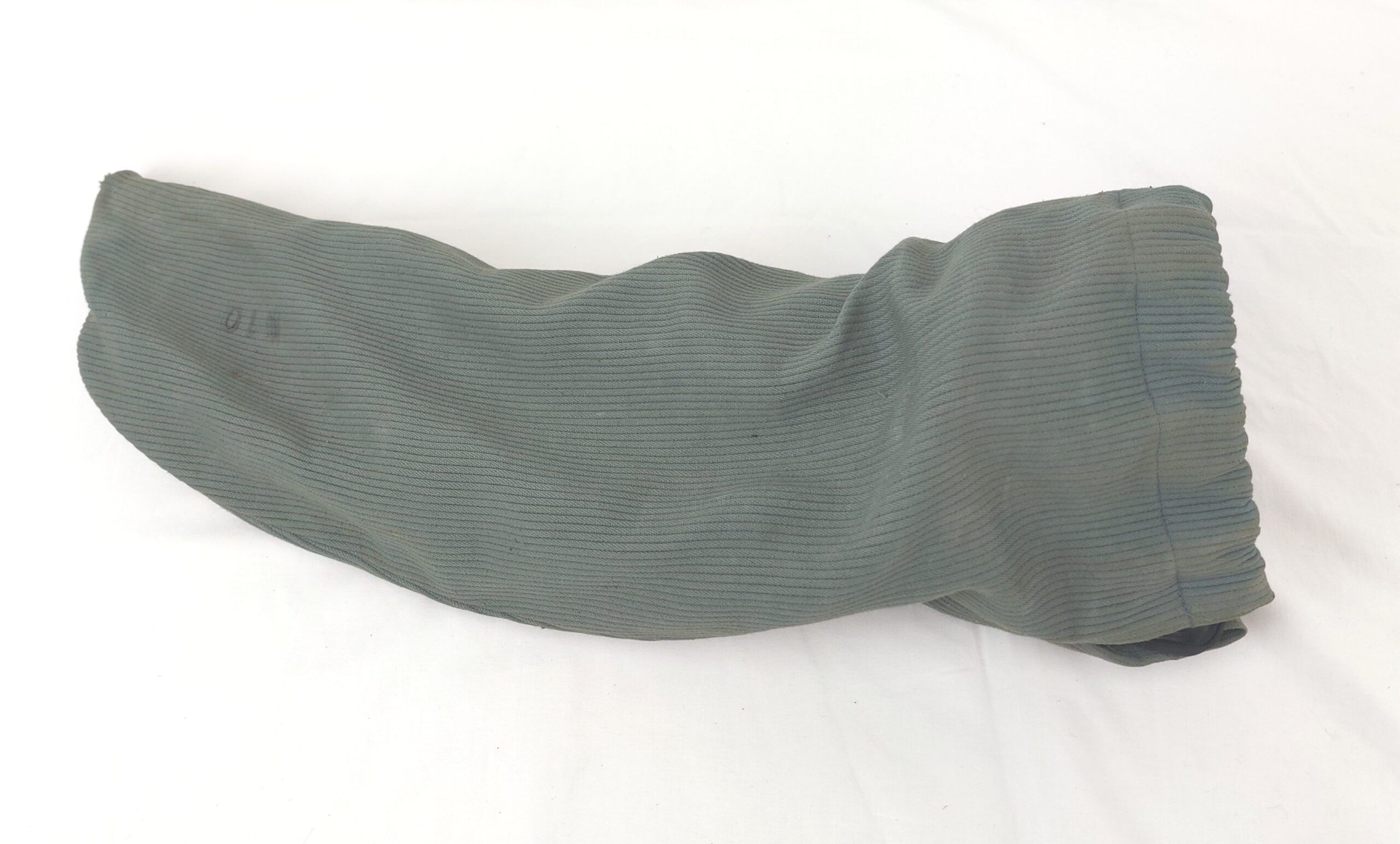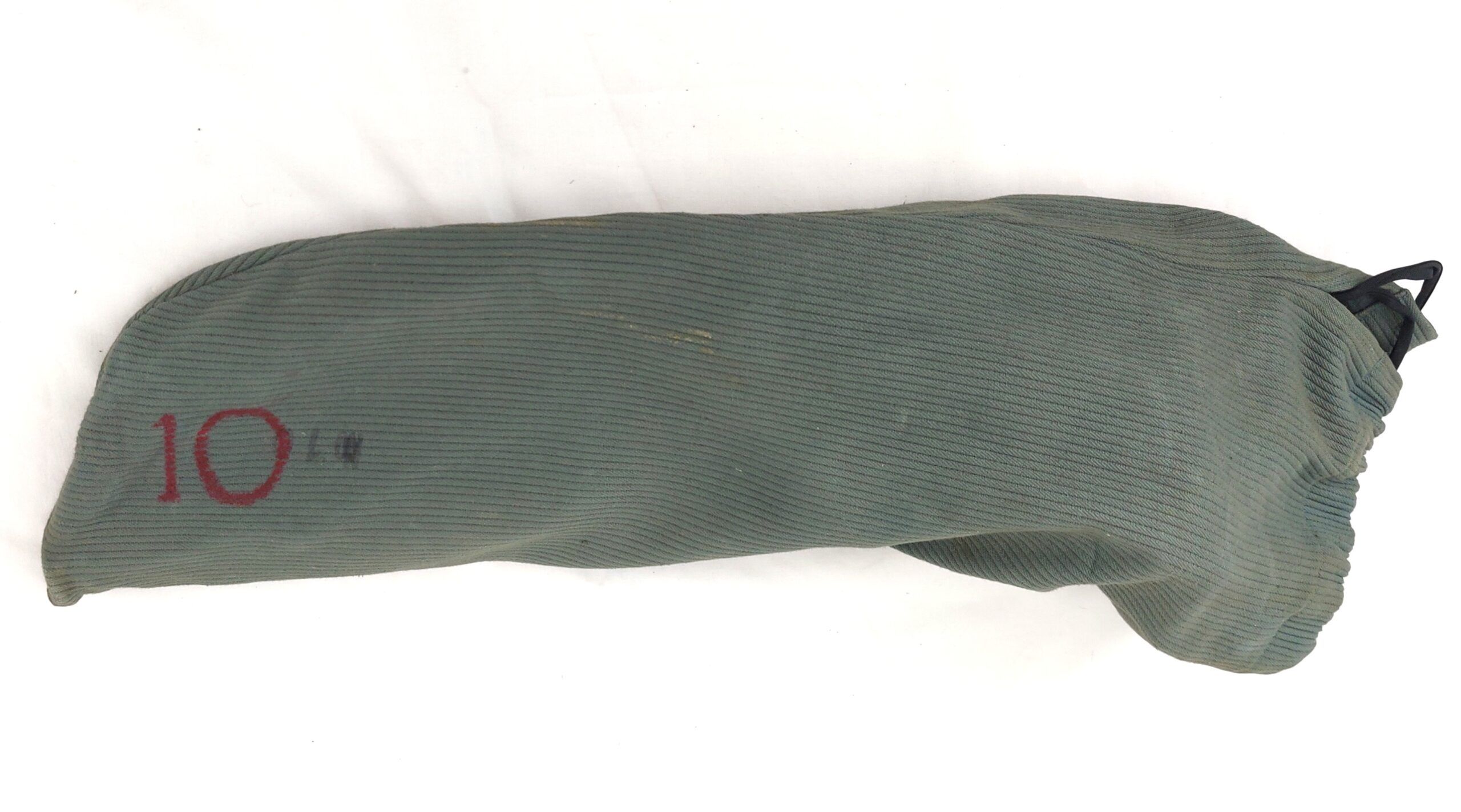*British, Henry Potter & Co Military Bugle, Marked 19*
Marked on the mouthpiece:
“Potter”
“19”
Marked on the body:
“19”
Unicorn Emblem
“Henry Potter & Co
Makers
36.38 West St
Charing Cross Road
London”
Approximate Measurements:
43cm long, 2.7cm diameter mouthpiece
The bugle is probably silver but is without hallmarks. It has a fixed mouthpiece and retaining chain. It comes with its regimental rope lanyard and a drawstring storage bag.
The surname Potter is closely associated with instrument making, with Henry Potter & Co. established in 1810 and still in operation today. It all started with Samuel Potter (1772-1836), who enlisted in the Coldstream Guards at 14 and rose to become Regimental Drum Major in the Third Foot Guards. As an officer, Samuel couldn’t run a business, so after marrying Elizabeth Jarvis in 1802 and the birth of his son Henry in 1810, he founded Henry Potter & Co.
After leaving the army in 1817, Samuel was listed as a maker of woodwind, horns, bugles, and trumpets. He authored two treatises: The Art of Playing the Fife (1815) and Manual for Drums, Fifes, and Bugles (1817). The company grew and became an official military supplier. Samuel’s son, Henry (1810-1876), took over after his death and moved the business to 30 Charing Cross, with the head of a unicorn as a stamp. In 1860, Henry’s son George opened a shop in Aldershot. From 1904 to 1970, the company operated at 36-38 Charing Cross before relocating to Aldershot.
Bugles, once used to convey orders on the battlefield, became less practical in World War I due to the noise of warfare. However, they continued to signal daily military routines, such as morning reveille and evening lights-out. During WWI, the bugle often played a more solemn role, with the “Last Post” sounded at funerals, sometimes by buglers as young as 14 or 15.
*Condition*
Very good overall condition. Dings and scratches commensurate with use. Please see photographs as part of the condition report.
JAQGOXAEE_6895178785


